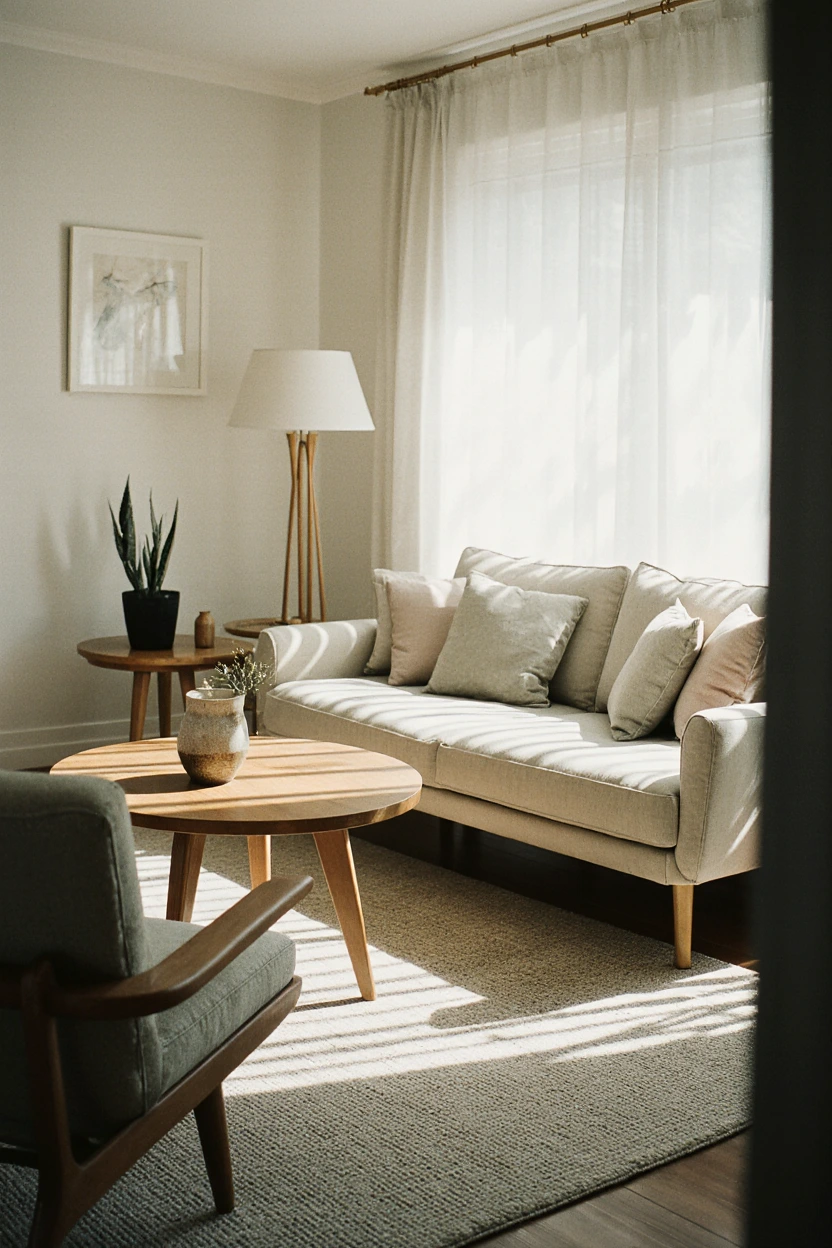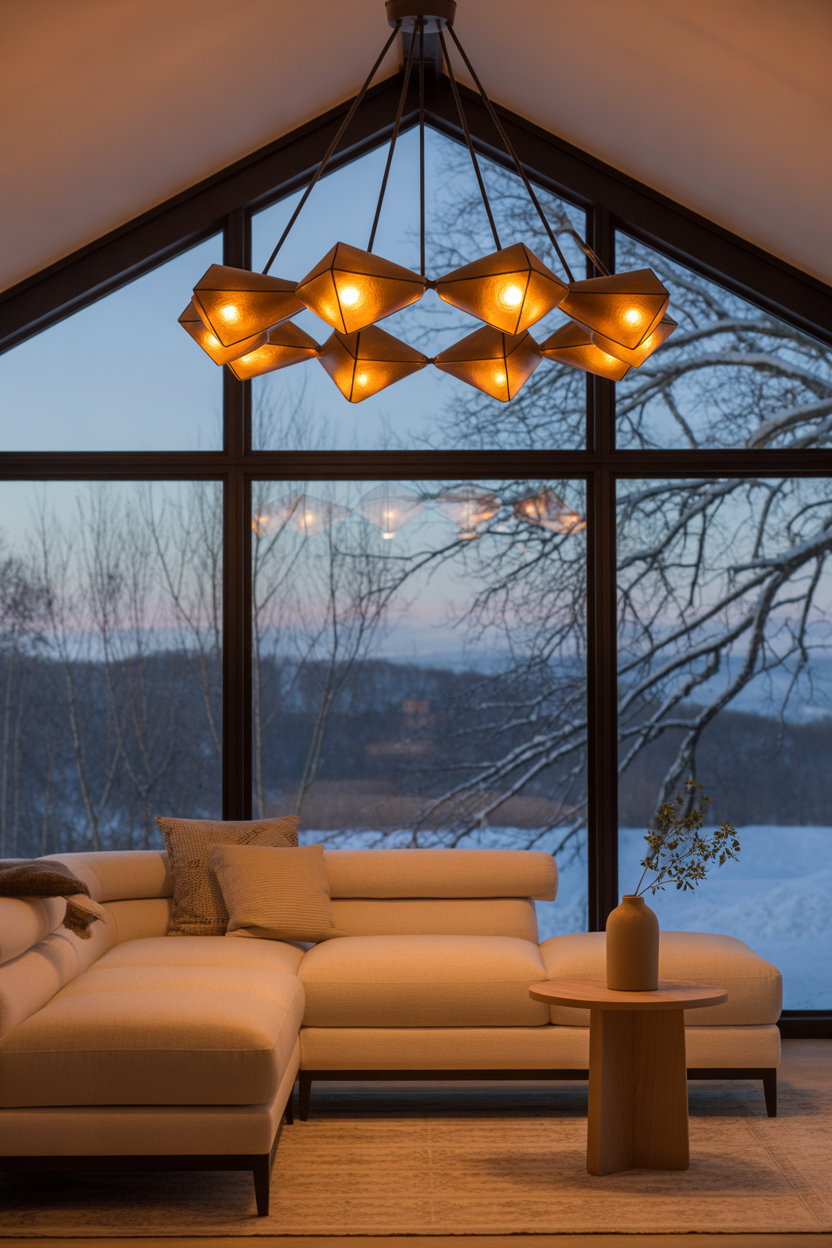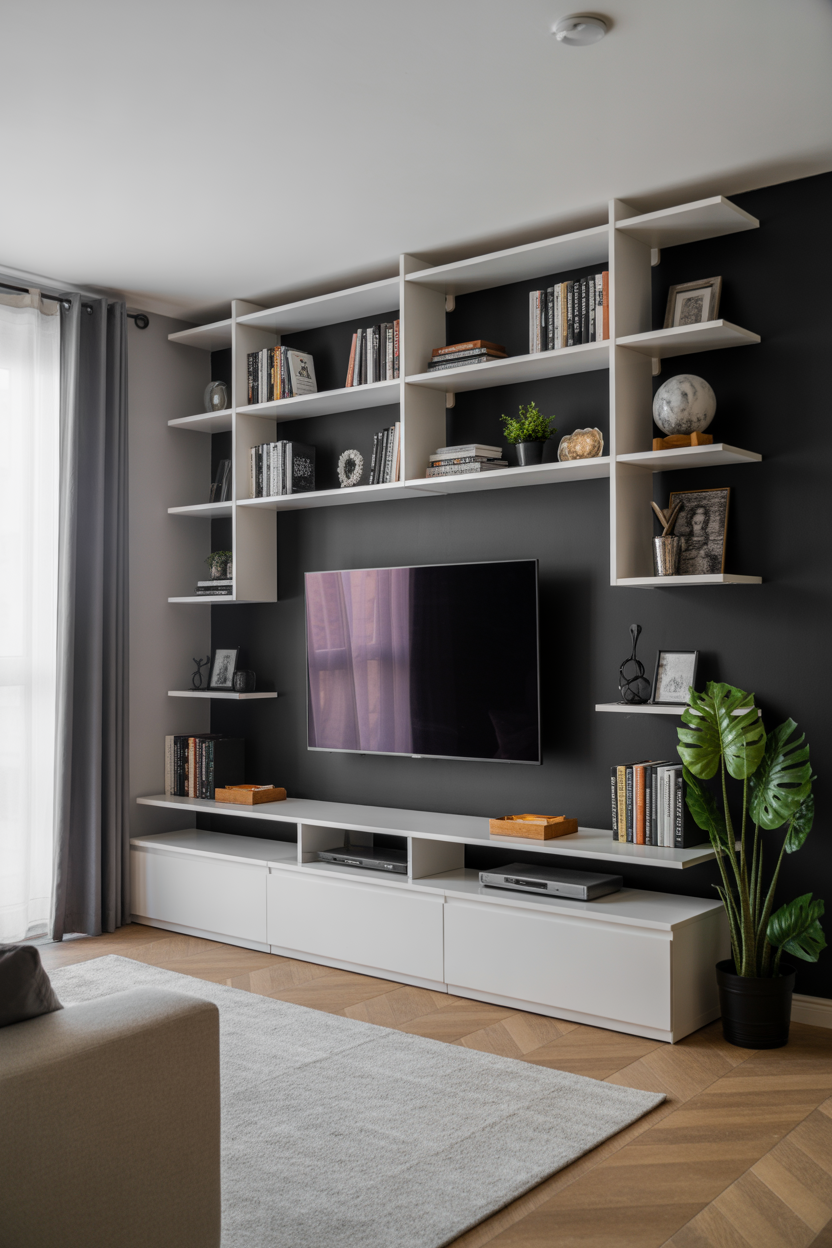42 Living Room Color Palette Ideas 2025 with Modern, Farmhouse, Coastal and Japandi Styles
Designing a living room color palette in 2025 is about more than paint—it’s about curating moods, telling stories, and blending lifestyle with design trends. Whether it is modern home decor ideas, rustic or the classic farmhouse designs, the palette will dictate the effect that a space emanates. Below, we’ll explore ten distinct approaches, each reflecting current design aesthetics while leaving room for personal expression.
1. Bright and Modern Home Decor Ideas
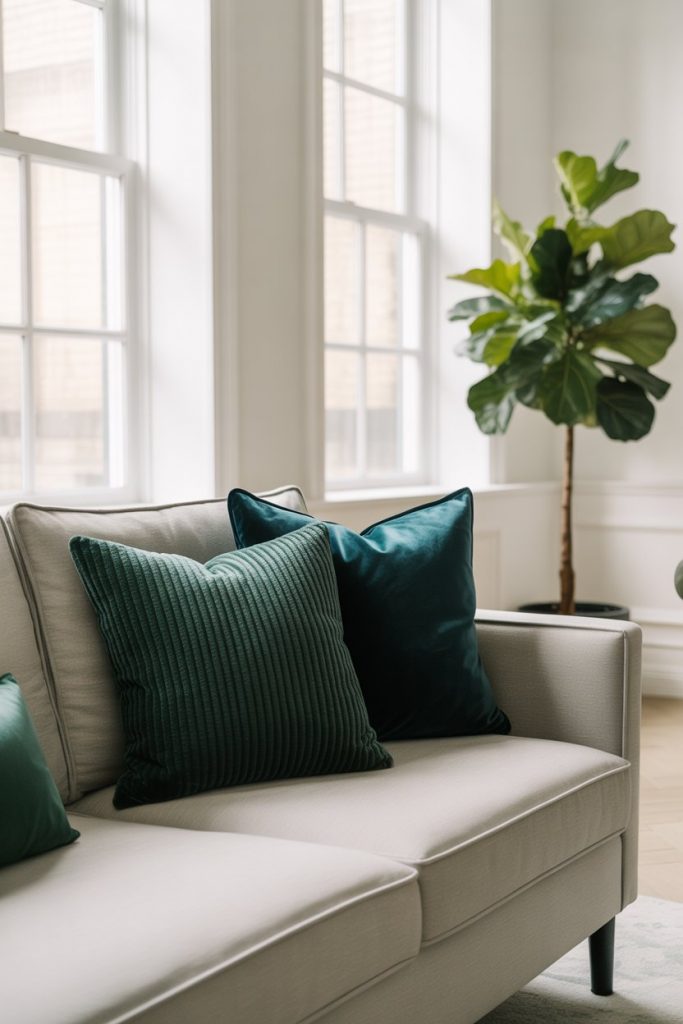
For those who love light-filled spaces, modern home decor ideas with bright color palettes are a natural choice. Imagine clean whites with paler gray backgrounds and pops of color, either deep colors like sapphire, or deep colors like emerald. An example is when you get a wispy palette, especially with Emily Henderson, a burst of one crazy color can illuminate a space. This approach works beautifully in open-plan layouts, where the flow of shades ties the space together without overwhelming the senses.
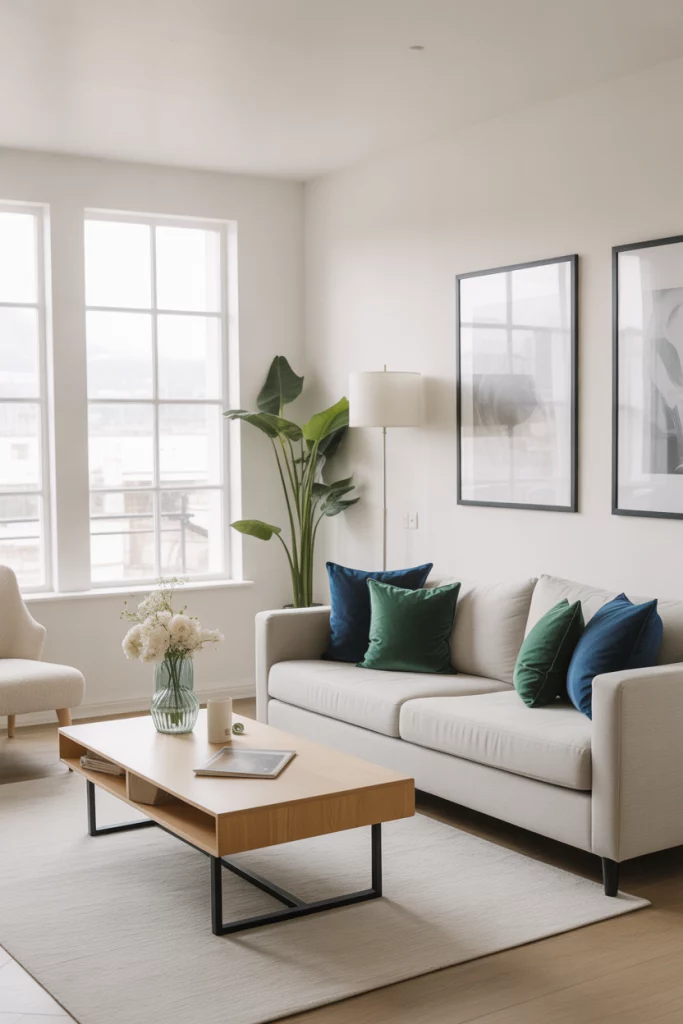
2. Rustic Modern with Warm Depth
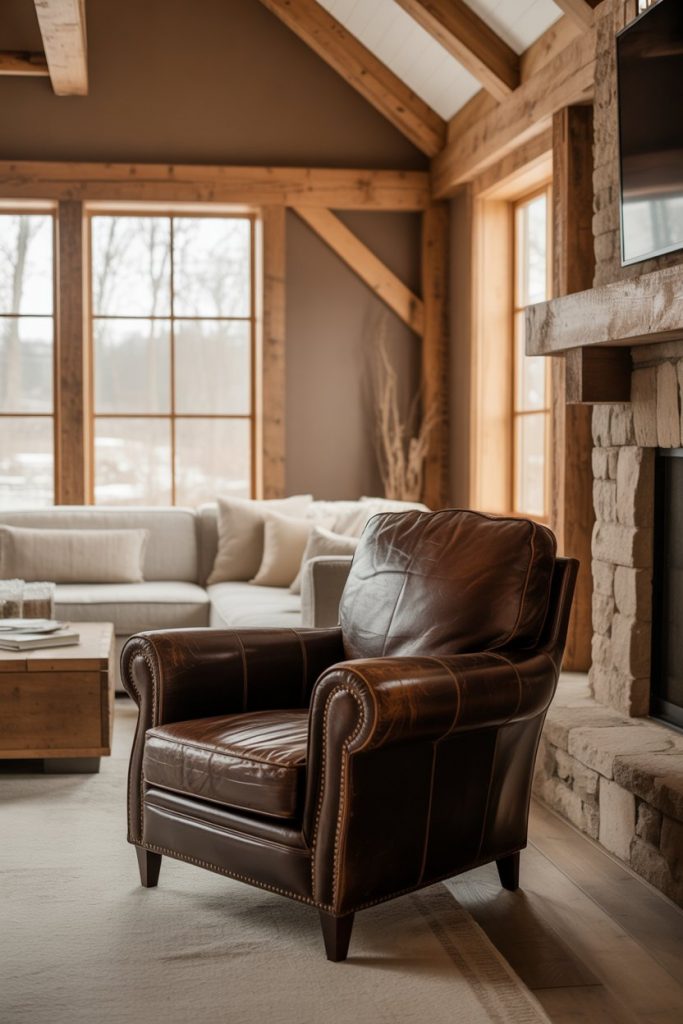
A rustic modern palette blends earthy tones with a refined edge, creating spaces that feel grounded yet elegant. Start with the taupe, sand and deep brows and then warm it up with warm creams. Incorporating natural texture such as reclaimed beams of wood or weaves gives substance The rustic modern style has become one of the most demanded styles in 2025 after Joanna Gaines popularized it. The result is timeless and practical, perfect for family homes seeking comfort with sophistication.

3. Japandi Calmness
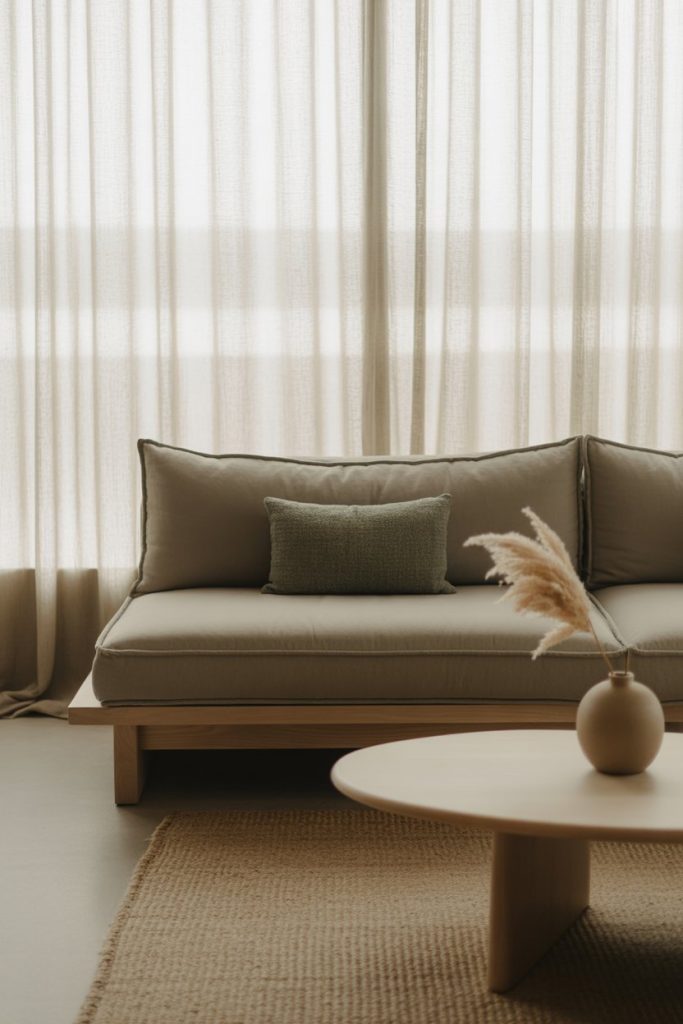
Japandi style combines Japanese minimalism with Scandinavian warmth, making it a strong contender among ideas colour schemes for living rooms in 2025. The color scheme is based on subtle gray, off-white, and sage green with undertones of natural wood. The atmosphere is tranquil and functional, yet still cozy. According to Dezeen, Japandi palettes continue to gain traction because they align with mindful living and sustainable design principles.
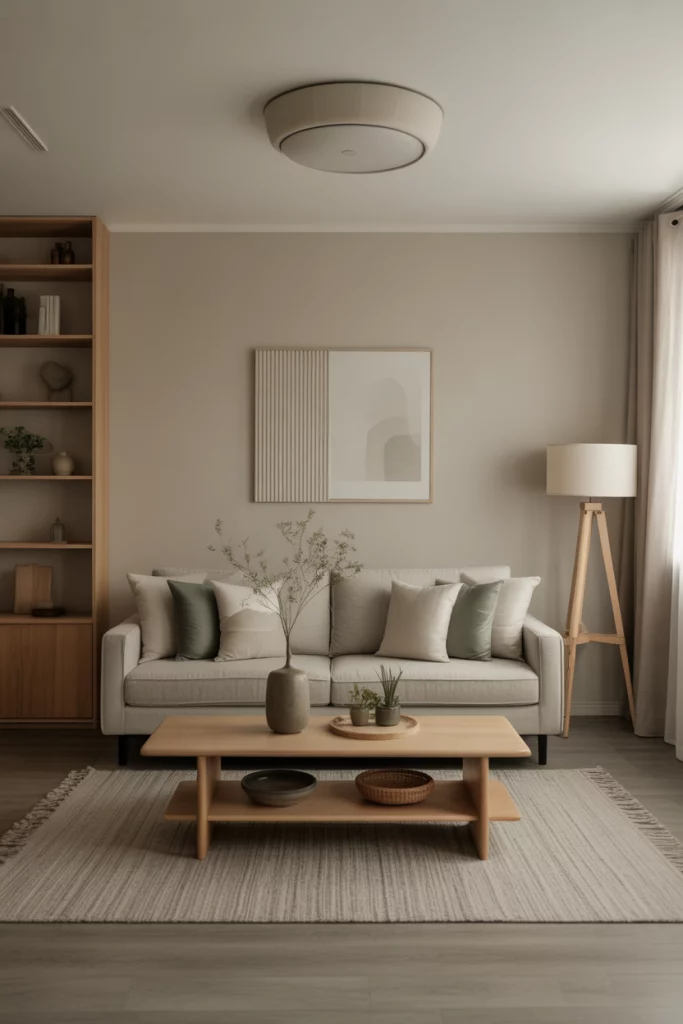
4. Transitional Elegance
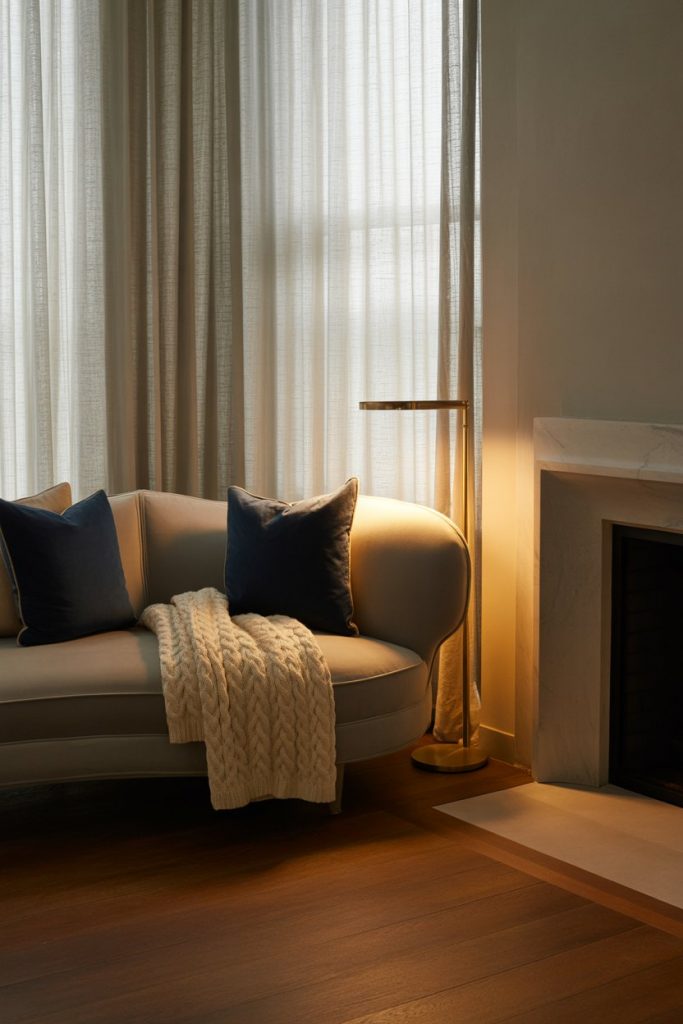
A transitional color palette strikes the perfect balance between traditional and contemporary. Include earthy grounding foundations like beige or stone gray and complement the look with posh accents in navy or charcoal. The transitional interiors are universal and can be applied both in the suburban houses and in the apartments in the city. This approach is favored by designers like Sarah Richardson, who often mix soft palettes with structured furniture to create approachable elegance.
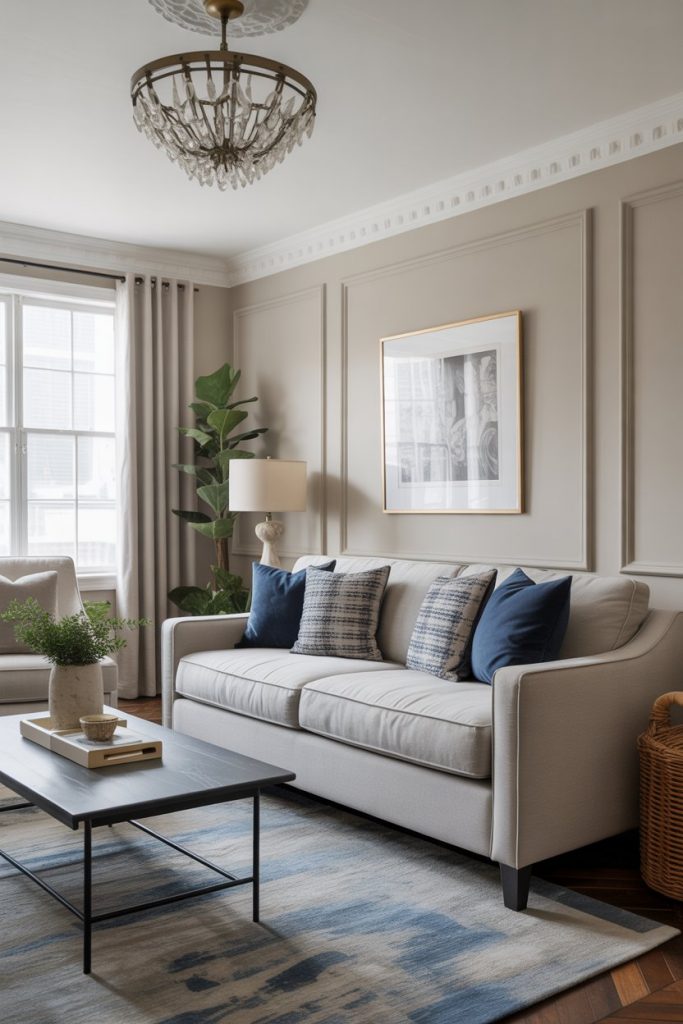
5. Coastal Fresh and Airy
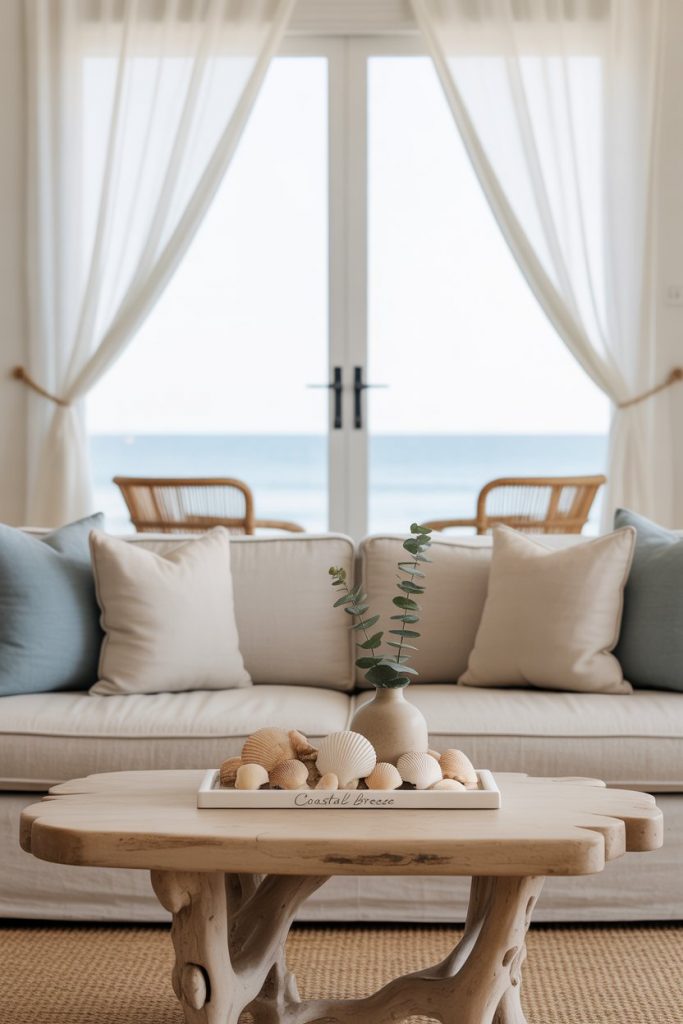
The coastal palette embodies fresh and airy vibes, using soft blues, sandy whites, and natural driftwood tones. This color arrangement brings peace in any indoor space that is located on the seashore or a big city apartment where some elements of a seaside house are desired. Combine with rattan elements, linen fabrics and sheer-curtains to feel breezy. Modern coastal palettes also weave in muted grays and pale greens for depth, evolving beyond the traditional blue-and-white look.

6. Warm and Cozy Farmhouse
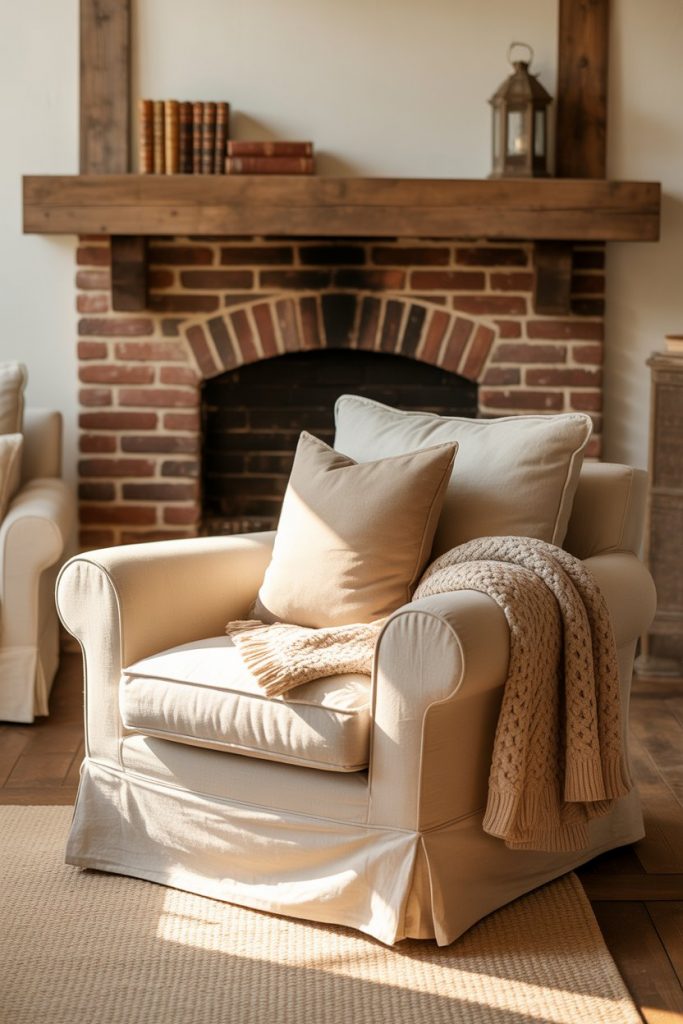
Few ideas feel as inviting as a warm and cozy farmhouse palette. Imagine white creams, light beige and warm woody colors. A hint of red brick wall or shiplap can add more farmhouse to the design and add character and history. The color scheme is quite awesome both in open spaces as well as smaller houses, which makes it a timeless choice. Magnolia Journal frequently champions farmhouse palettes for their ability to create comfort without losing sophistication.
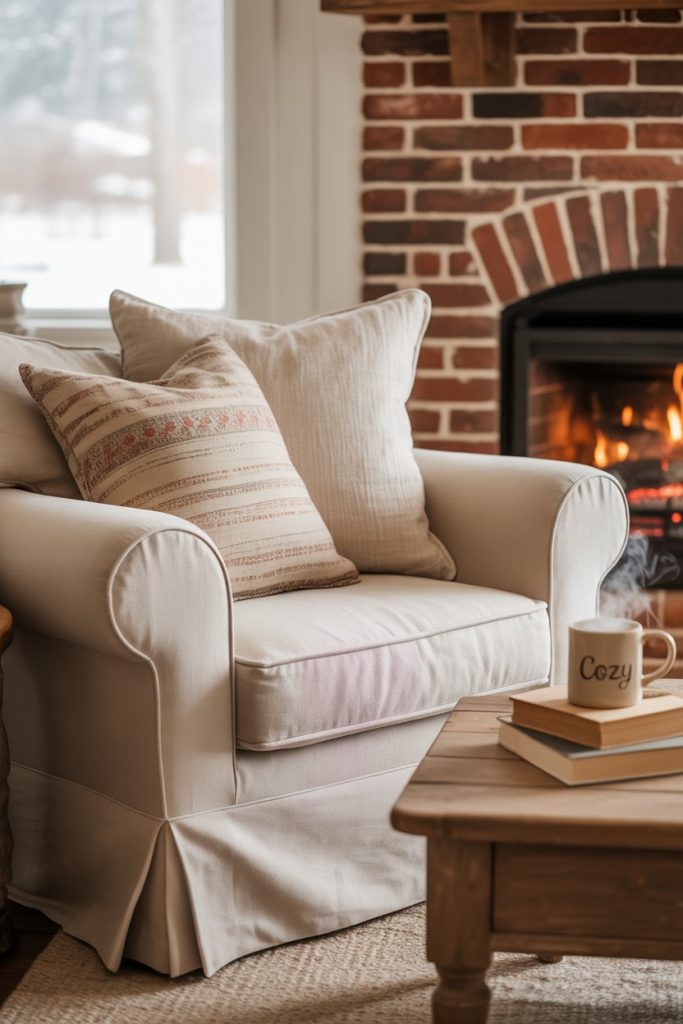
7. Moody Sophistication
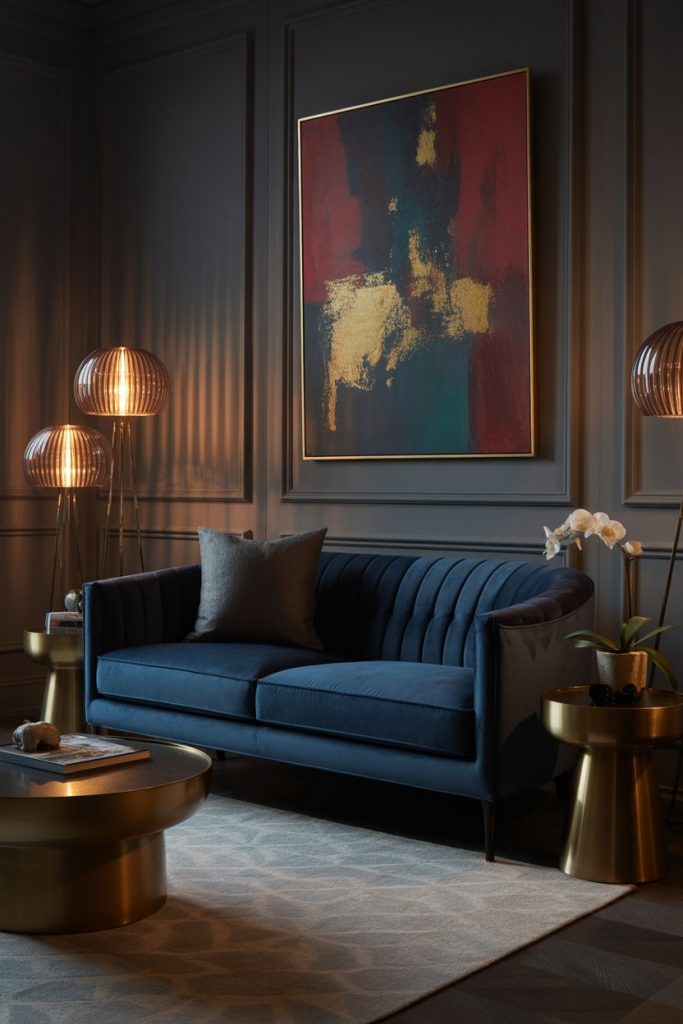
For those seeking drama, a moody palette adds intensity and intrigue. Dark colors, such as charcoal, navy, even forest green can serve as a backrest to a living room and still be elegant. A designer such as Kelly Wearstler will tend to employ somber color schemes in order to contrast heavily with metallics and bold artwork. This style is perfect for those who want to elevate everyday living into something theatrical yet livable.
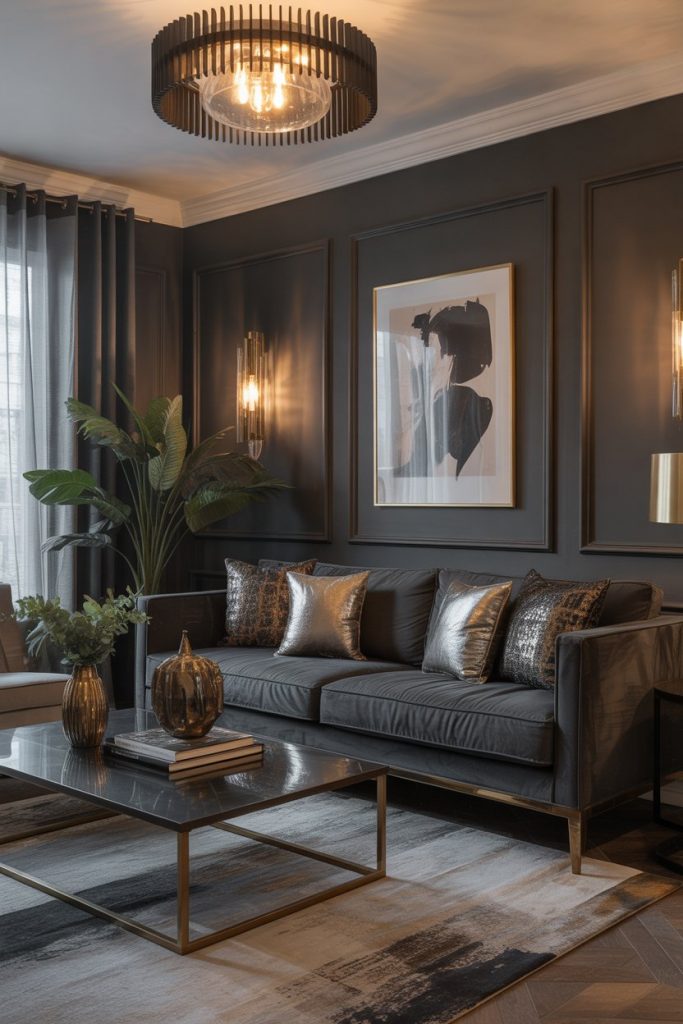
8. Mid-Century Modern Energy
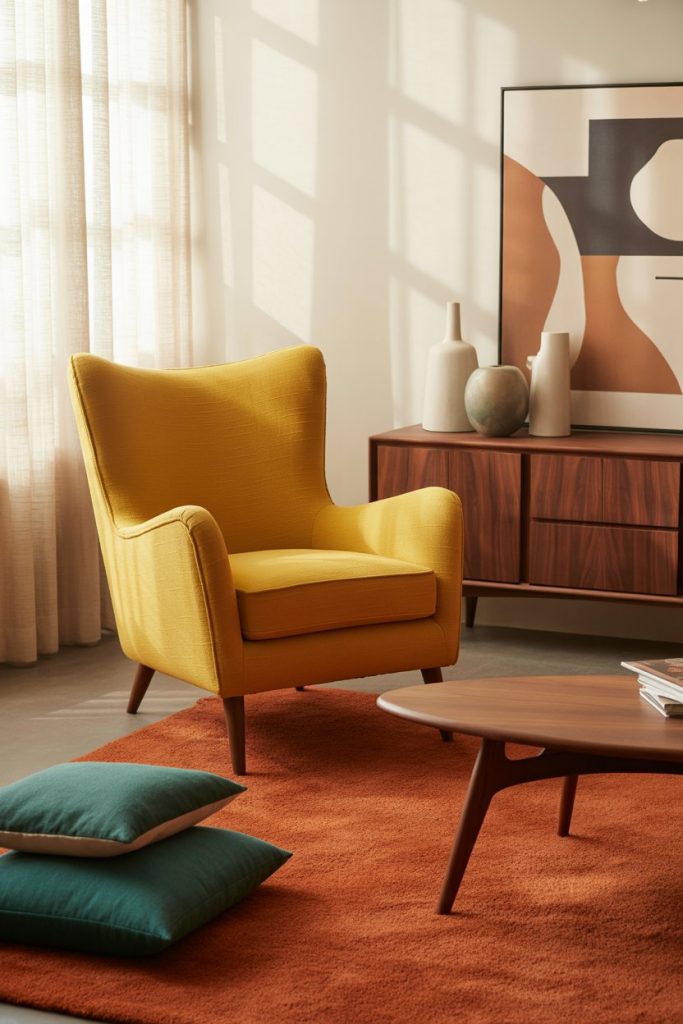
A mid-century modern palette brings vibrancy and optimism into living spaces. Vintage-inspired shades such as mustard yellow, teal and burnt orange combine best with walnut furniture and streamlined designs. The combination with neutral backgrounds brings the colors out without being too strong. As Architectural Digest notes, mid-century palettes remain timeless because they capture both nostalgia and modern appeal—ideal for design-savvy households.
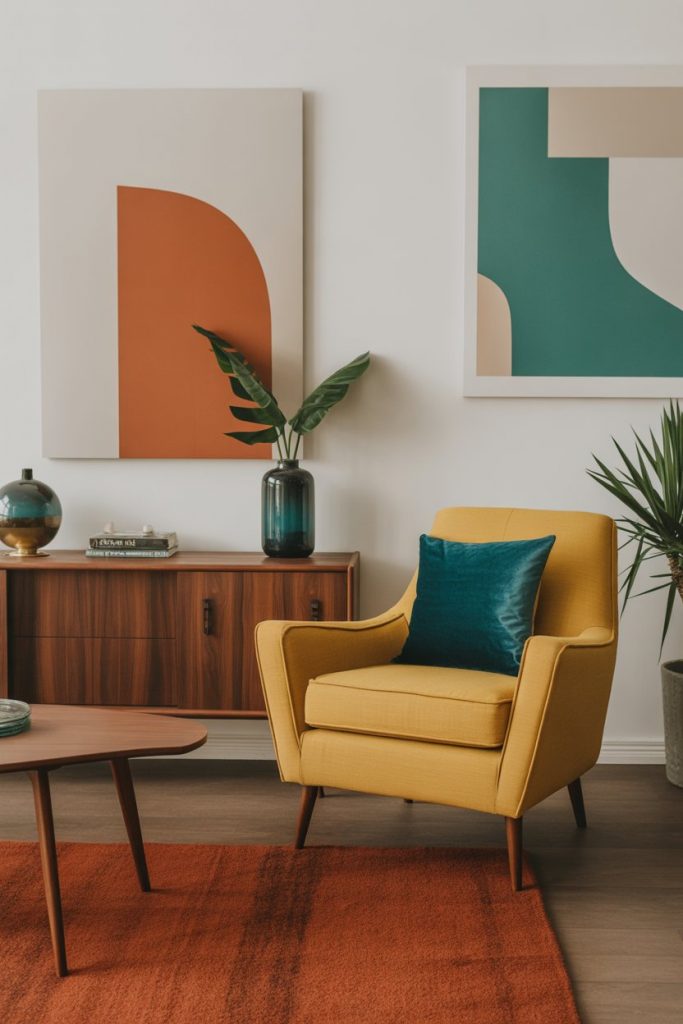
9. Country Cottage Farmhouse Comfort
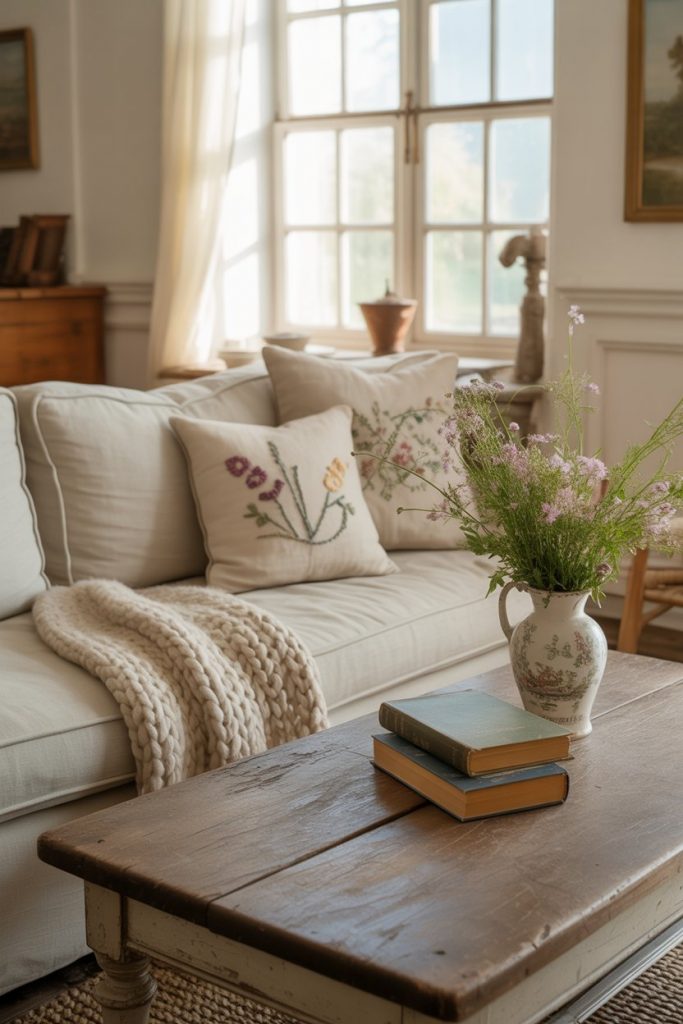
The country cottage farmhouse palette leans into softer shades—creamy whites, light grays, and pastel tones—paired with distressed wood finishes. A touch of floral or plaid textile makes it warmer and suitable to be used by families. The origin of this style is the English cottages although the style fits perfectly the American homes. It creates a lived-in charm while maintaining a sense of gentle refinement.

10. Earthy Natural Vibes

For those who gravitate toward grounded ideas colour schemes, an earthy palette is ideal. The predominant colors that contribute to the feeling of natural humanity are rich terracotta, olive and clay. Combine with woven fabrics, rocks and greenery to create more depth. The earthy tones are also used in tandem with the current healthy trends providing the spaces with peaceful atmospheres. They’re versatile, working as easily in a loft with an open concept kitchen as in a suburban family home.
11. Classy Neutrals with a Twist

For homeowners seeking timelessness, a classy neutral palette never fails. Consider ivory, cream and taupe with the understated metallic, brushed gold or bronze. Its beauty is in simple elegance, it is easy to add seasonal touches to bring the look to life. To make the palette seem deliberate, rather than one-dimensional, designers tend to recommend layering textures, such as wool rugs accompanied by silk curtains. This approach is ideal for formal living rooms or transitional spaces that need refinement without excess.
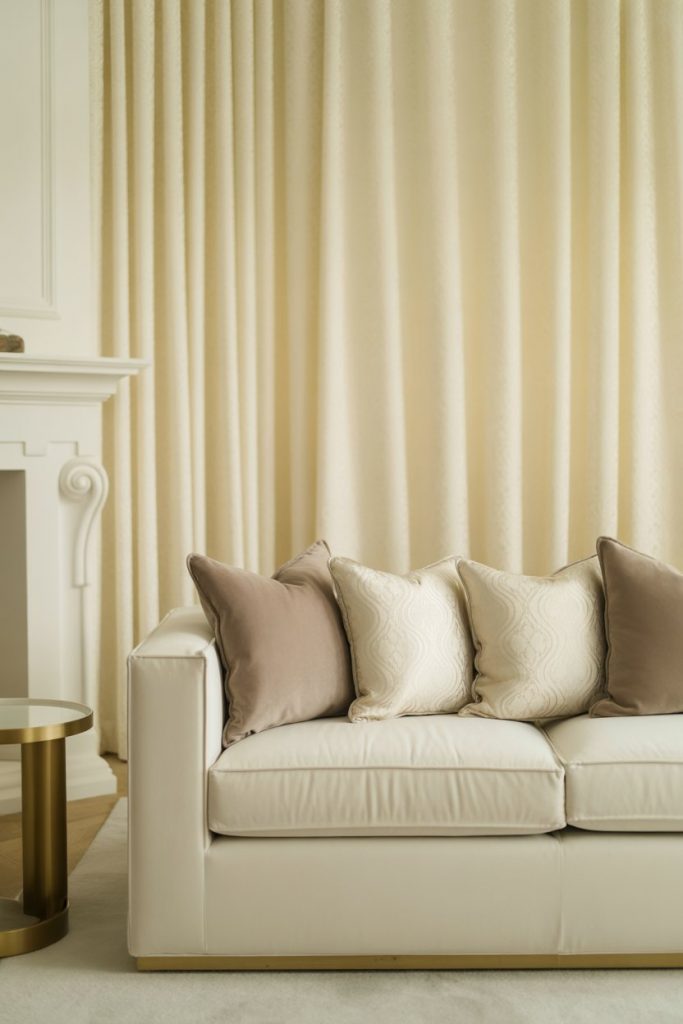
12. Red Brick Wall Warmth
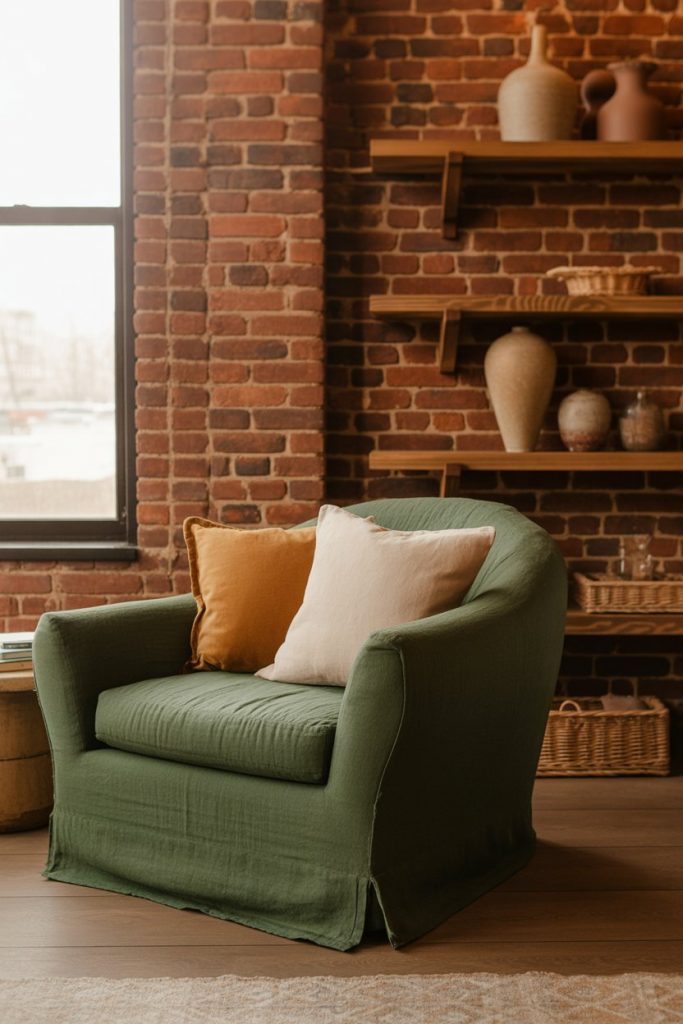
A red brick wall naturally shapes the color palette of a living room, guiding tones toward earthy warmth. Balance with cream, caramel and deep forest tones. This down-to-earth style is useful to industrial-inspired lofts, as well as rustic homes. Experts from Houzz note that brick adds history and authenticity, making it perfect for those who want a character-driven backdrop without heavy ornamentation.
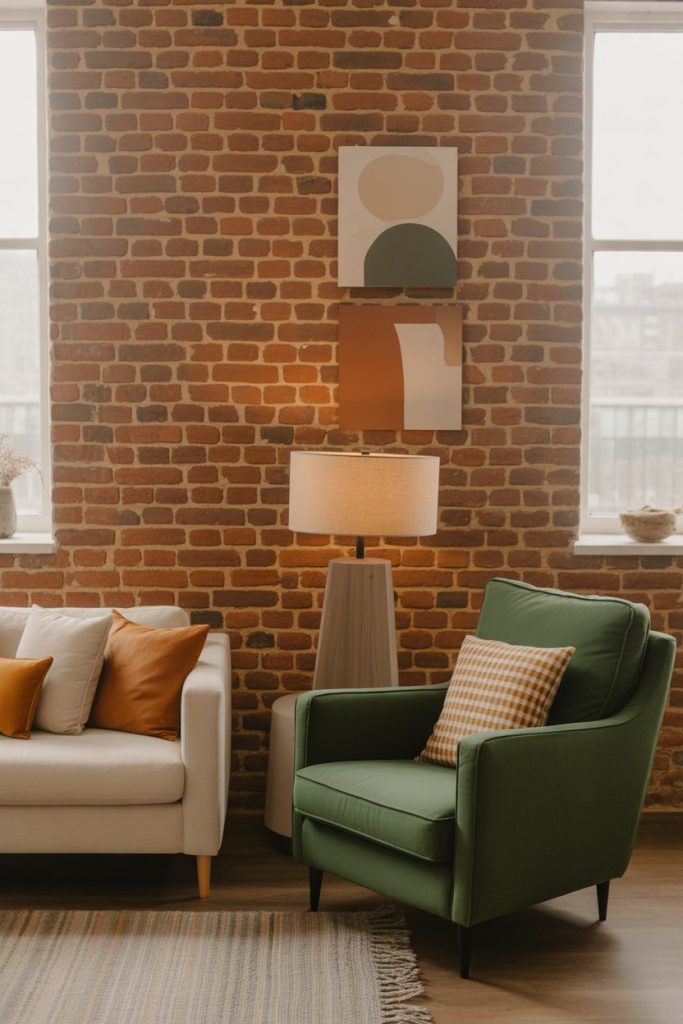
13. Vintage Charm with Pastel Accents
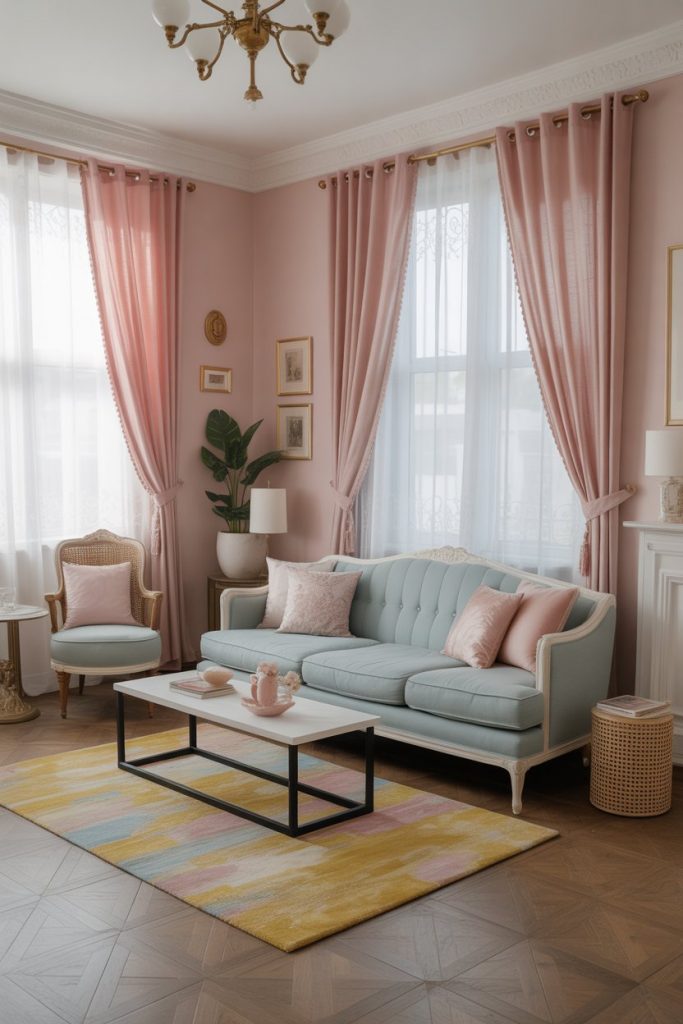
A vintage palette for living rooms leans into muted pinks, powder blues, and soft yellows. These sounds evoke memories of mid-20 th century design but are not outdated in 2025 combined with minimalistic furniture. It is possible to create a layered look, using lace textiles or brass fixtures This palette works beautifully in smaller spaces, where softer colors help expand the sense of light and air.

14. Earthy Neutral Simplicity
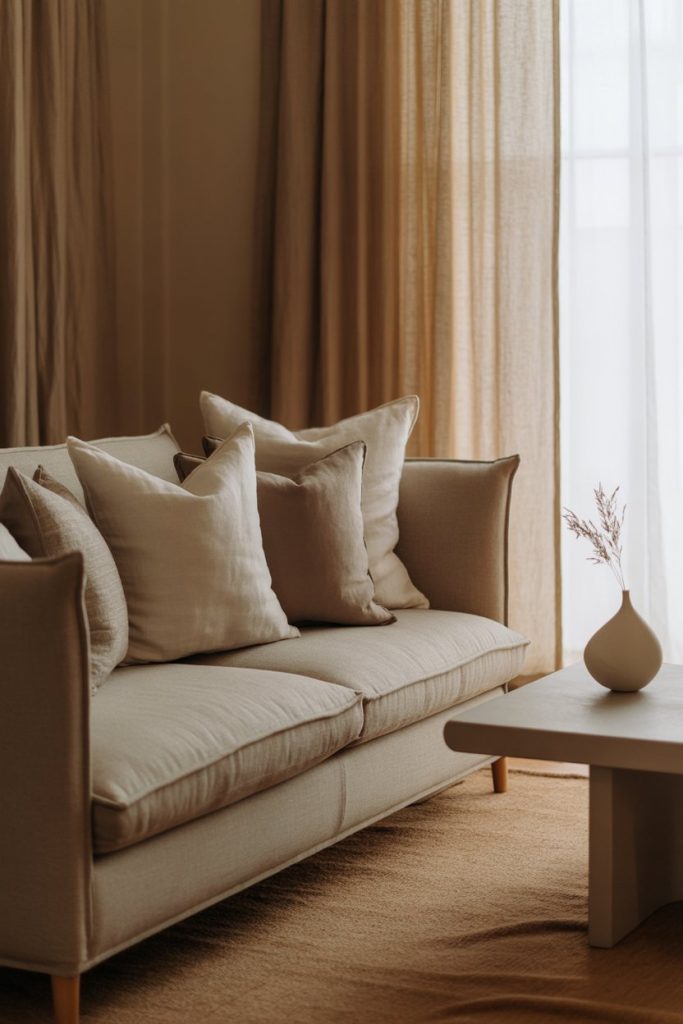
Earthy neutral palettes highlight beiges, stone grays, and warm sands. This design is adaptable as it is ideal to calm and stable suburban residences. Matte surfaces, combined with natural materials, such as linen and cotton, give the room an uncluttered, but elegant, atmosphere. Designers emphasize neutrals as a strong foundation—easy to adapt over time as decor trends shift, keeping the living room relevant without full renovations.
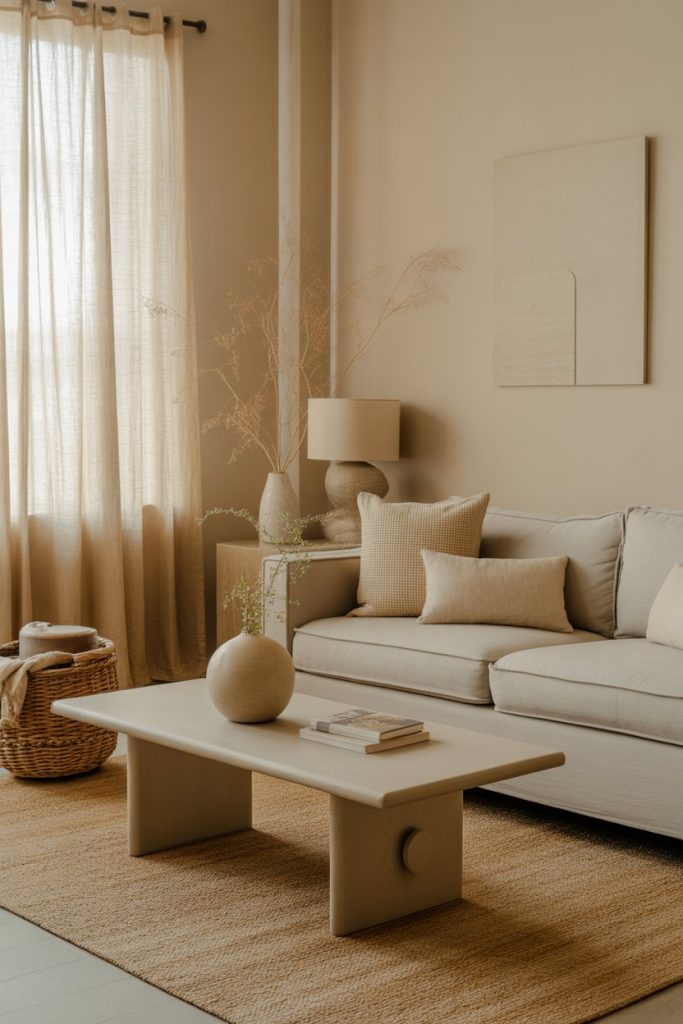
15. Sage Green Tranquility
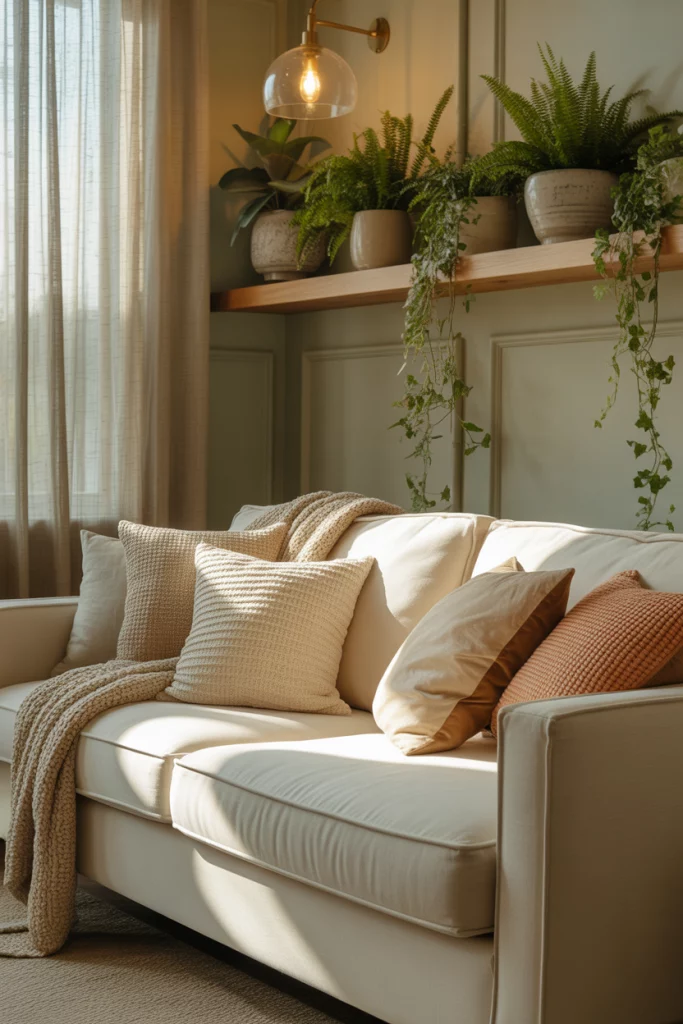
A sage green palette has surged in popularity for its balance of freshness and serenity. Balance out sage sofas or walls with creamy neutrals and wooden accents to bring things into balance. Designers at House Beautiful call sage green restorative and versatile, and it works well on both a rustic home or a modern apartment. It’s especially striking when paired with brass lighting or leafy plants for a soft organic finish.
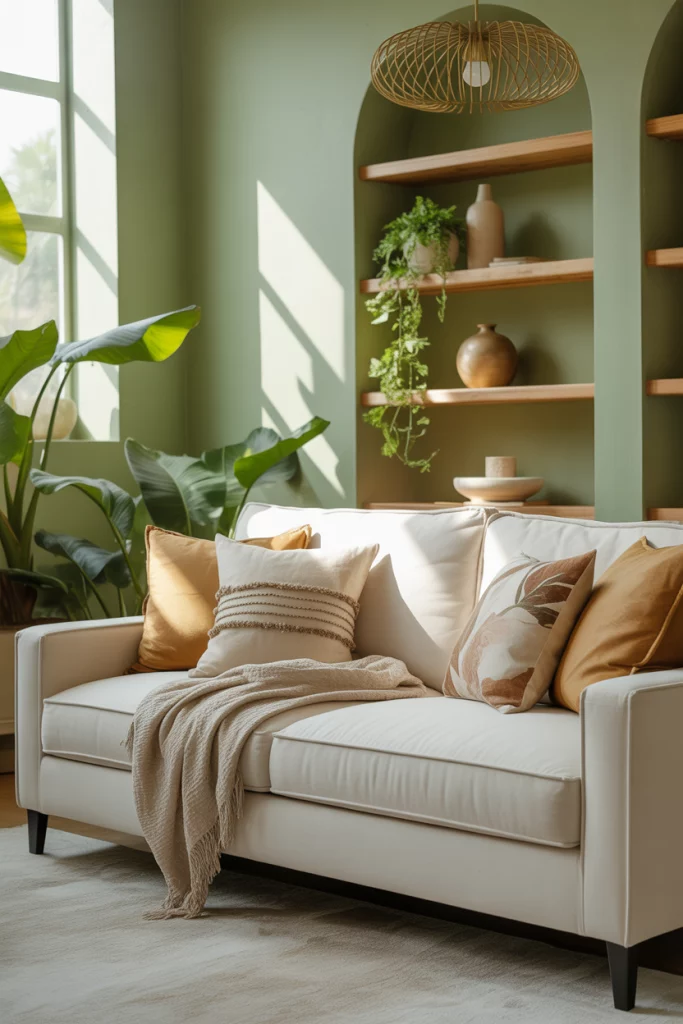
16. Fresh and Airy Whites
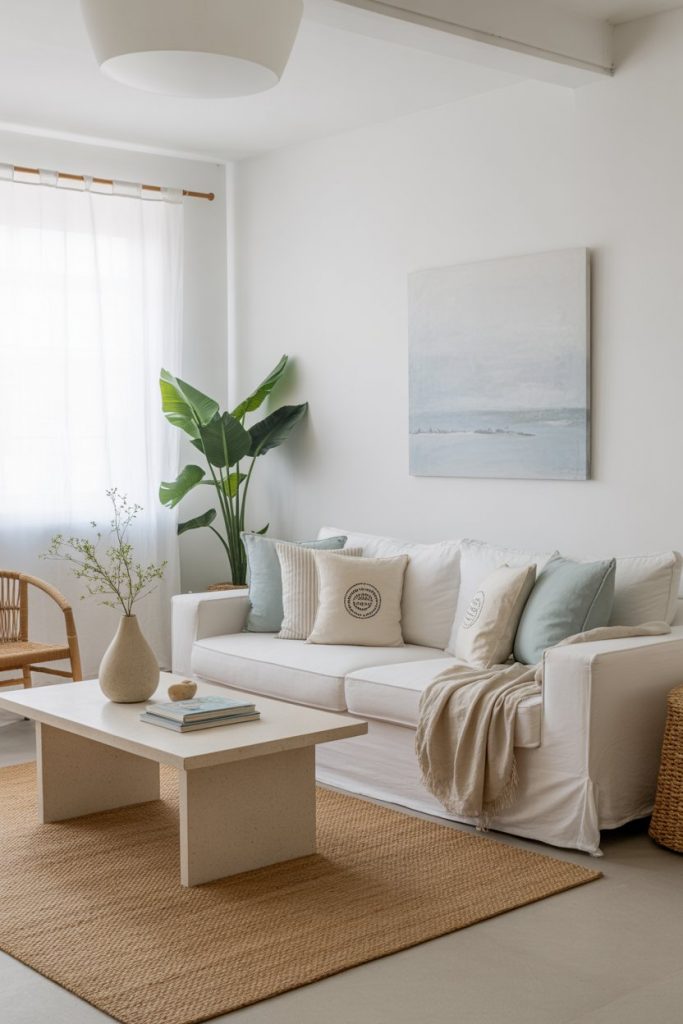
For a crisp aesthetic, fresh and airy white palettes dominate in modern coastal or minimalist homes. The room is made not sterile, though, with the addition of white as undertones cool gray, light blue and blush. Designers such as Nate Berkus emphasize the role of tactile sensory perception in an all-white setting, such as wool blankets, jute carpets and stone flooring to keep it tactile. Perfect for urban apartments craving openness.

17. Rustic Warm Farmhouse Layers
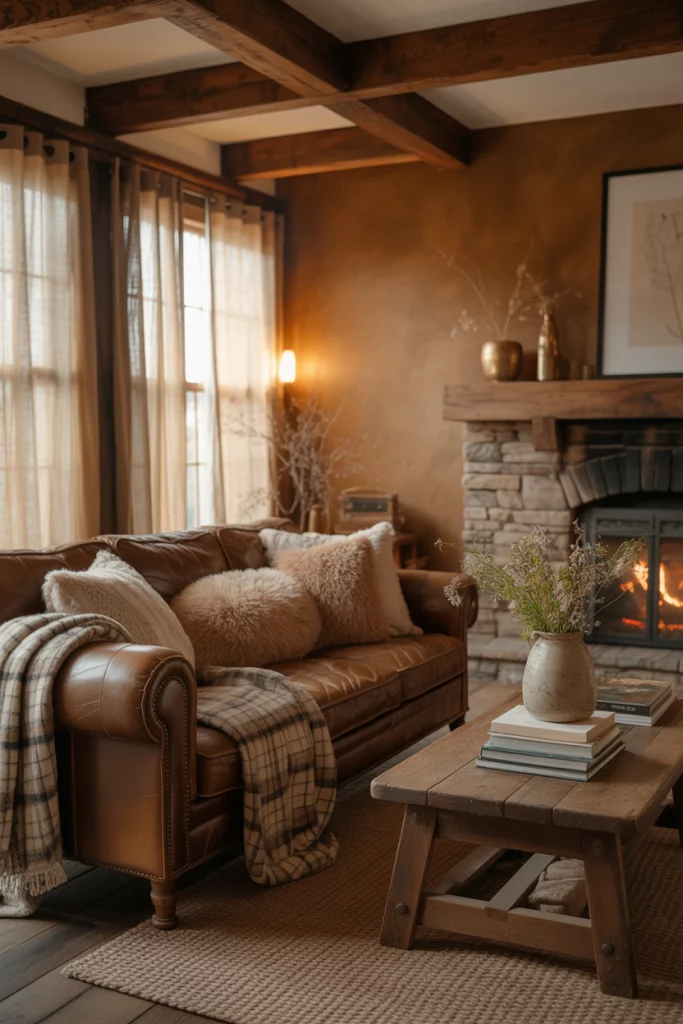
Rustic warm palettes often begin with rich browns, caramel, and cream, layered with wood beams and stone fireplaces. This style is simply an extension of the farmhouse trend that makes the homes be very historical yet modern. Add plaid textiles or leather furniture to emphasize warmth. This palette thrives in larger family rooms where coziness is essential for gathering.
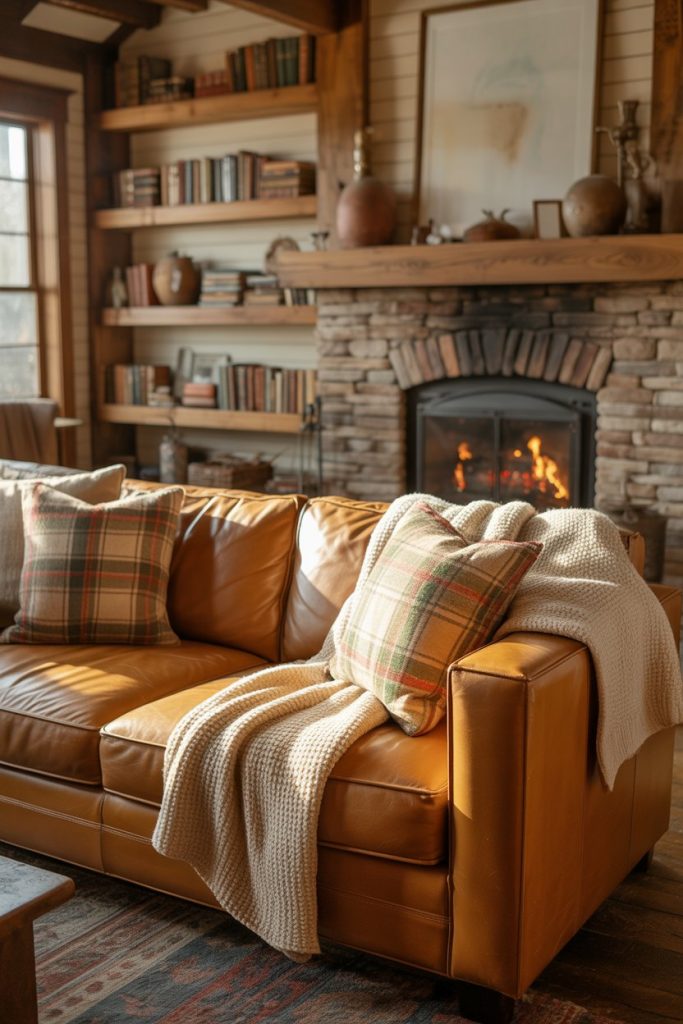
18. Modern Coastal Blues
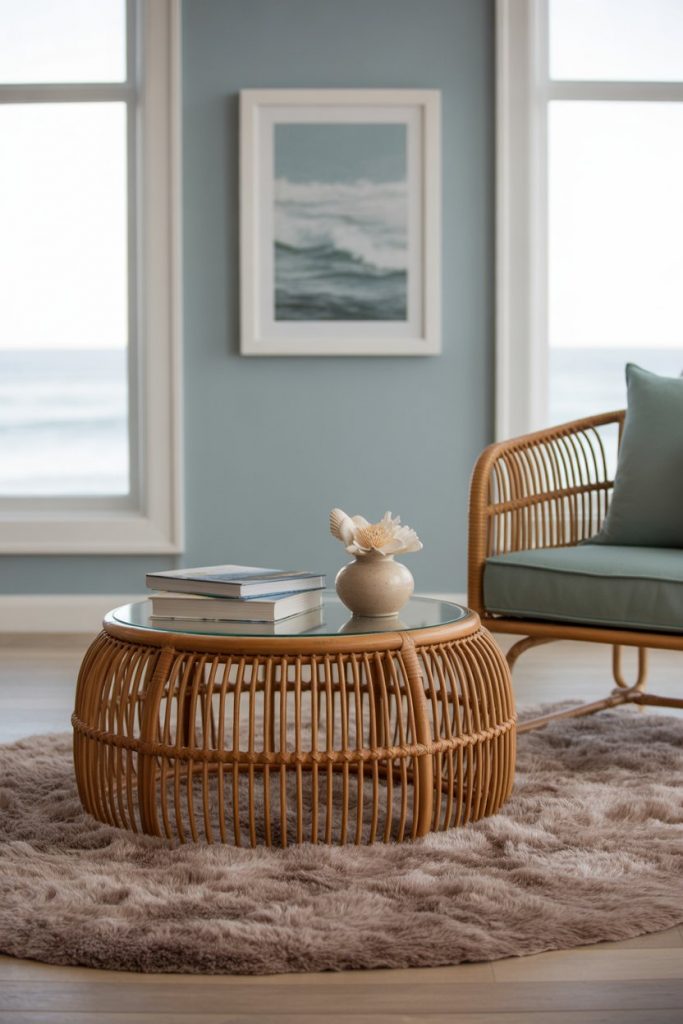
A modern coastal palette updates the classic blue-and-white by introducing stormy grays, seafoam greens, and sandy taupes. The effect is a sleek but relaxed atmosphere that would be ideal in a living room with open concept cooking. Designers recommend adding natural fibers and ocean-inspired art for subtle but powerful atmosphere.
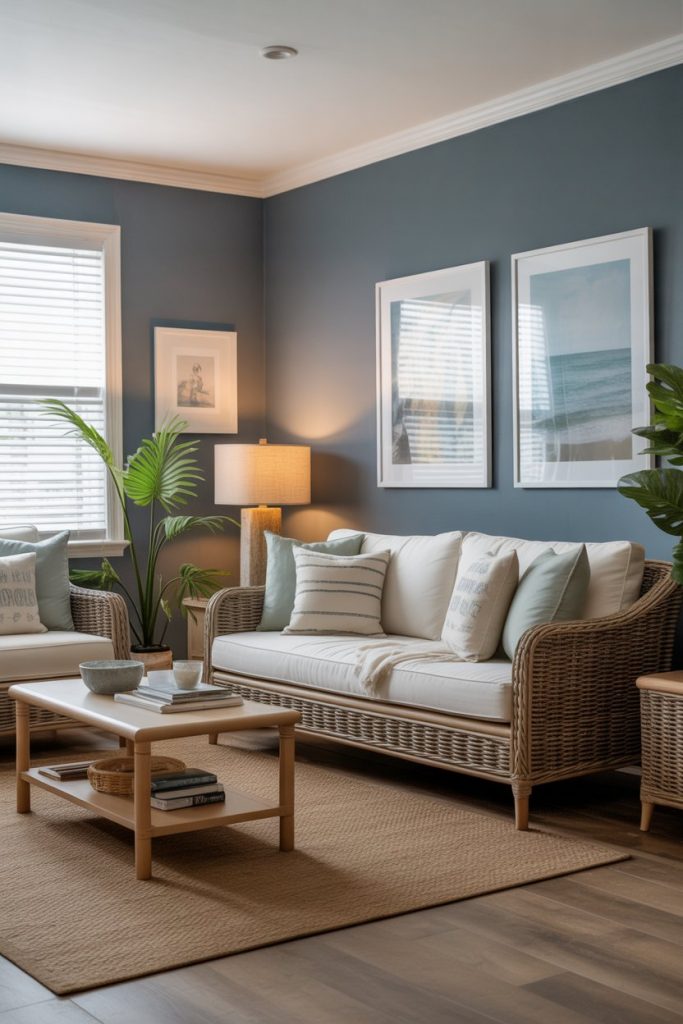
19. Country Cottage Pastel Comfort
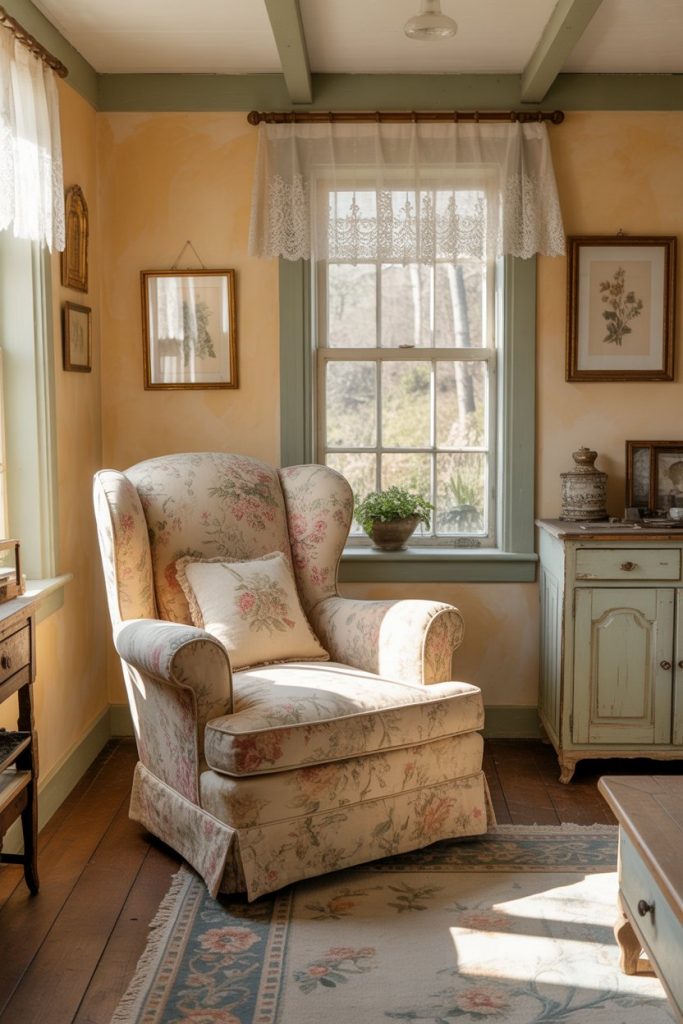
The country cottage farmhouse palette shines when pastels like butter yellow, lavender, or mint are combined with distressed woods. These shades are also tactile and warm, generally bringing memories of an easier life. Add floral fabrics, slipcovered chairs and any vintage pieces to add charms. It’s a palette ideal for creating a homey, relaxed gathering space with personality.
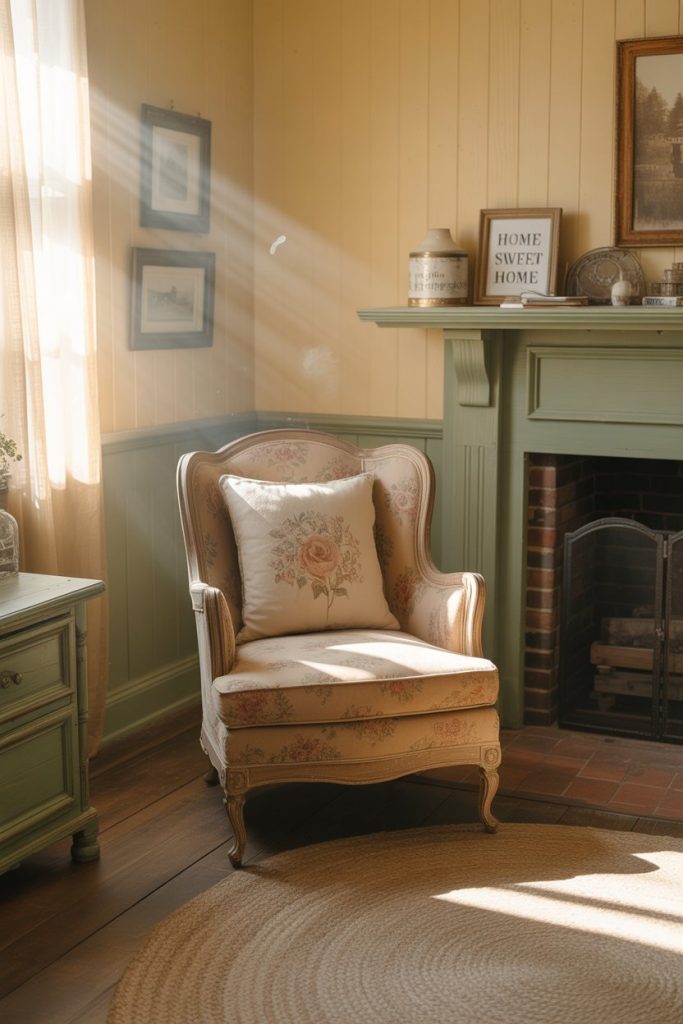
20. Moody Jewel Tones
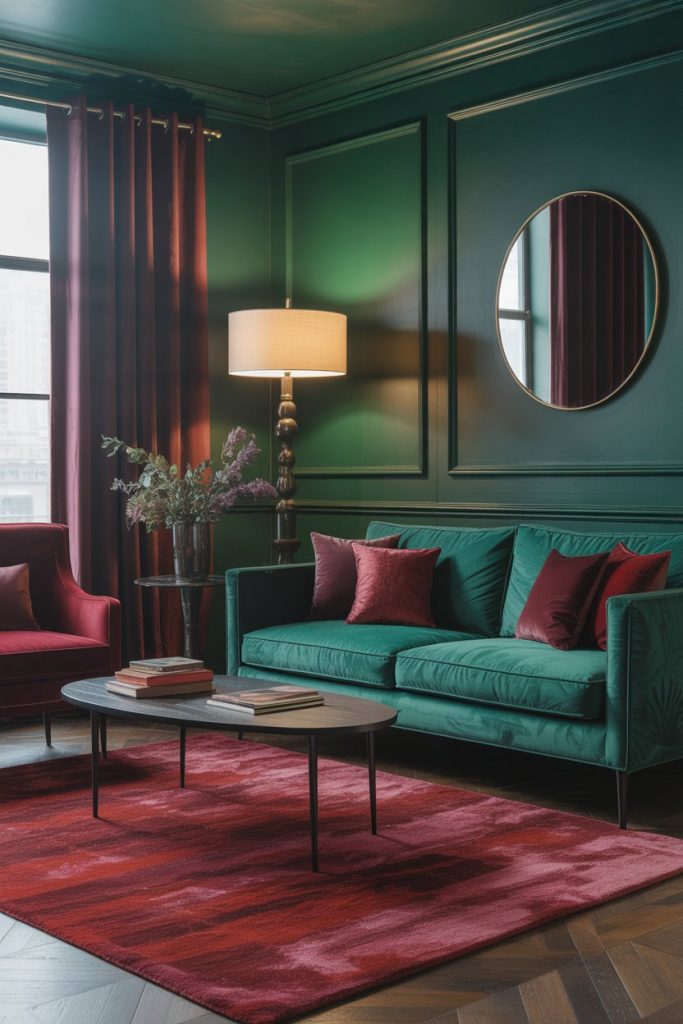
When embracing a moody palette, jewel tones like emerald, amethyst, and ruby offer bold alternatives to neutral-heavy schemes. These tints bring sophistication and opulence, in combination with a dark wood or velvet. Kelly Wearstler has a way of adding jewel tones to give her modern edge, but remain opulent. This palette thrives in urban lofts or formal spaces where drama is welcome.
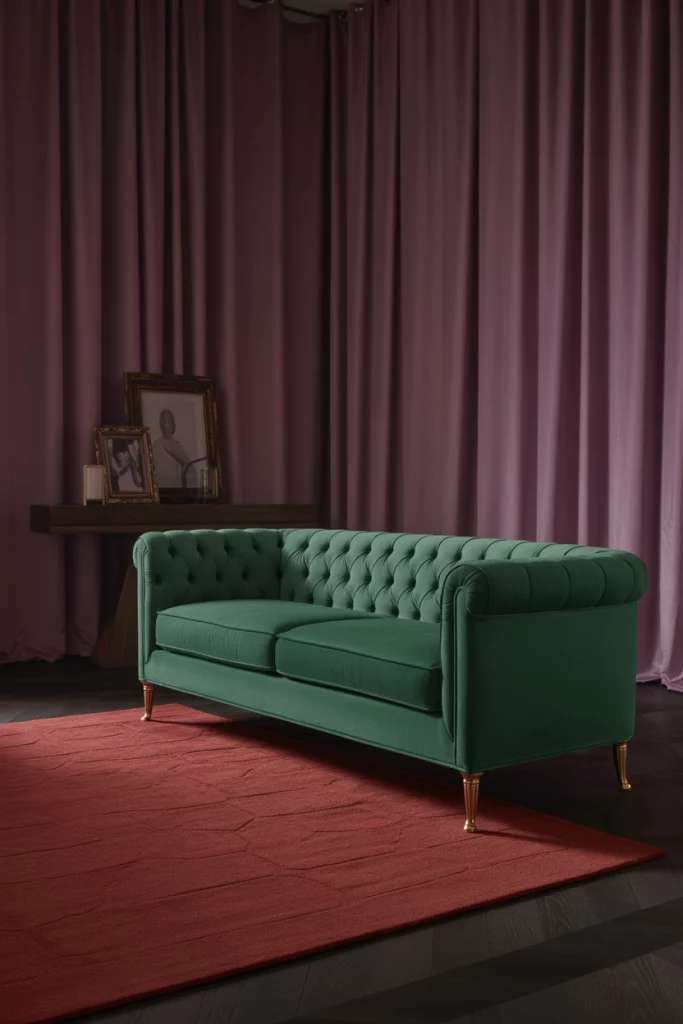
21. Transitional Soft Contrast
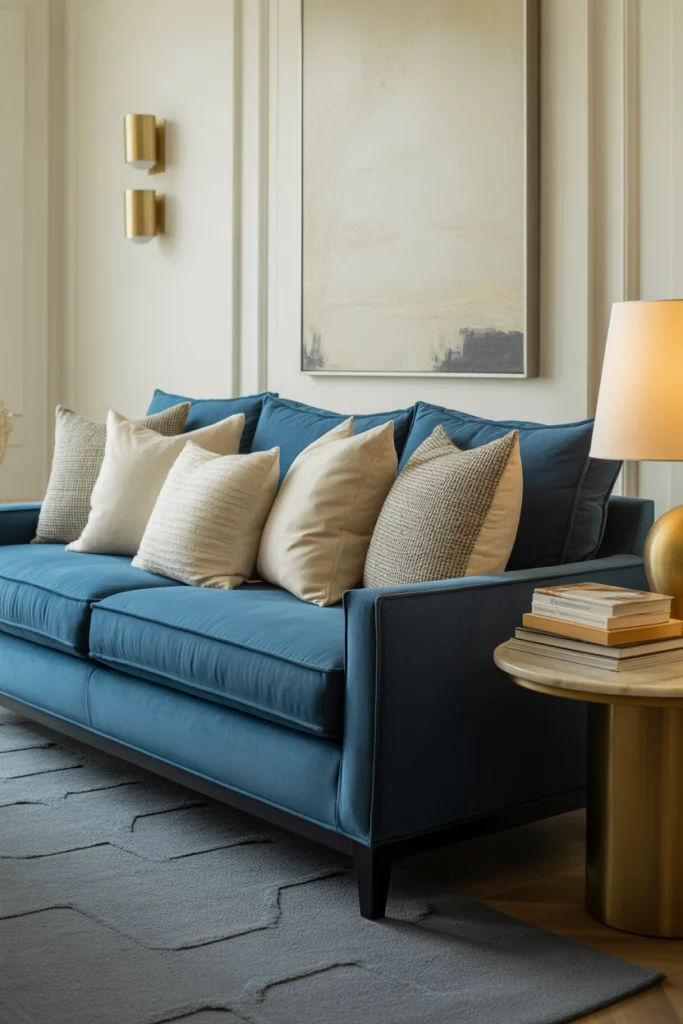
A transitional palette can also be expressed with soft contrasts—light walls paired with darker furniture or vice versa. Pairing ivory walls with navy sofas or charcoal rugs is a combination of interest, but not intimidating. This is an avenue that can be applied in both the traditional suburban design as well as the modern apartments. Transitional palettes are often designer favorites because they give flexibility as tastes evolve.
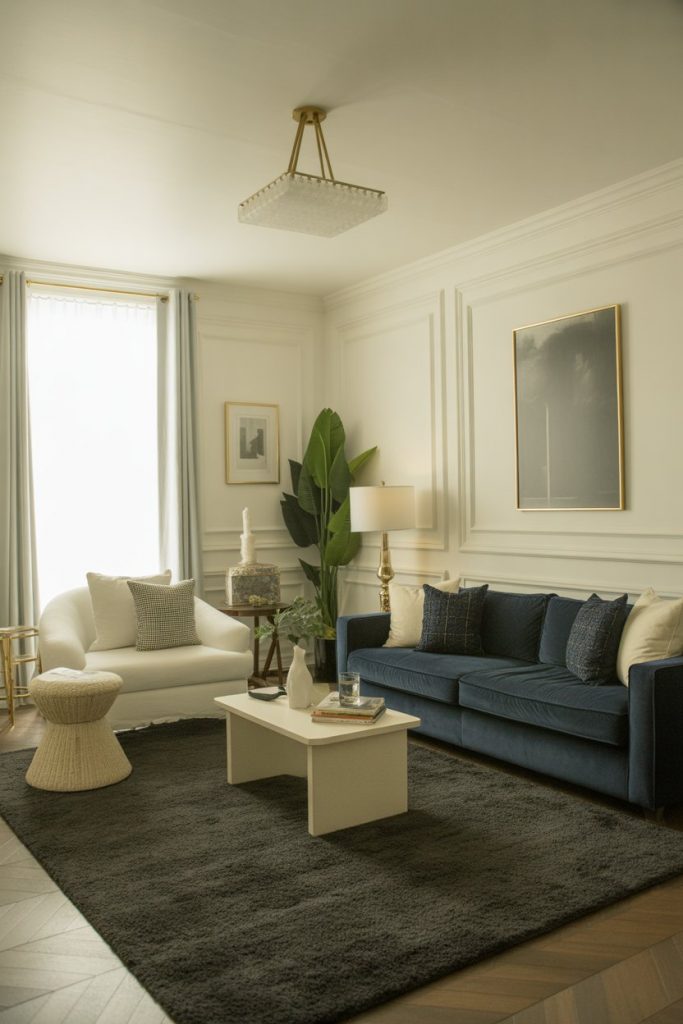
Conclusion
Choosing the right living room color palette is ultimately about reflecting your personality while staying in tune with evolving 2025 design trends. Whether it makes you want to lean into Japandi tranquility, farmhouse coziness, or something that leans dark and modern, color is what shapes our perception of our homes. Which of these palettes resonates most with you? Share your thoughts or your own favorite palettes in the comments—we’d love to hear your take.
